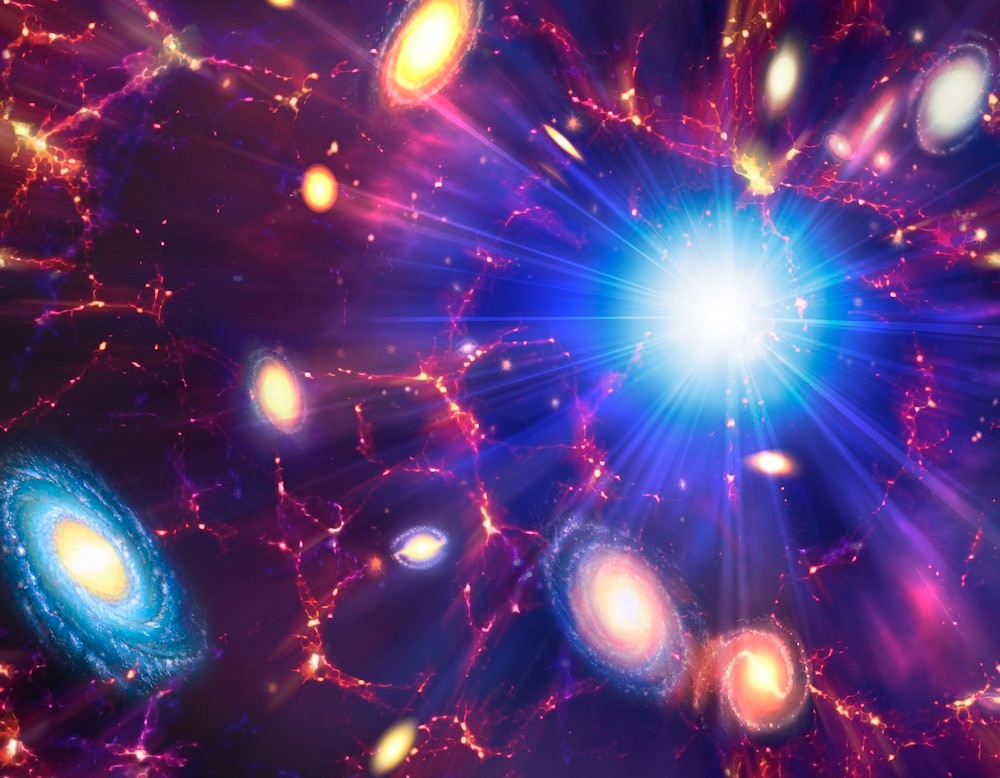Create a free profile to get unlimited access to exclusive videos, sweepstakes, and more!
Ever wonder why the universe exists? Bizarre cosmic Q balls might have the answer
So this might be why the universe didn't self-annihilate right after the Big Bang...globs of quantum fields.

While the reason the universe exists is something that has been unfathomable to the human brain for eons, answers might be creeping out of the vast darkness.
The universe is not supposed to exist. It really isn’t. In the first moments of the Big Bang, if equal amounts of matter and antimatter were released, they would have annihilated each other right away, because the properties of matter and its inverse mirror image are exact opposites. Somehow, they didn’t and we’re still here. That has to mean there was some phenomenon that made the universe end up with more matter than antimatter — but what was it?
Enter Q balls. These theoretical objects are thought to be clumps of quantum fields that formed immediately after the Big Bang, and their imbalance of matter than antimatter might explain why the universe didn’t self-destruct. Physicist Graham White of the Kavli Institute believes that proof of Q balls disintegrating would in turn elucidate why we and everything else in the cosmos even exist. He recently led a study published in Physical Review Letters.
“Q balls can form if two conditions are satisfied,” White told SYFY WIRE. “First, a charge is conserved. This means if you have a bunch of particles, they cant just collapse to a soup of radiation. Second, it is takes less energy for the charge to be in a large blob rather than a bunch of particles.”
Quantum fields are all over the universe. It is the irregularities in these fields that create the particles we and everything else out there is made of. How these fields are shaped defines their behavior, including their amount of potential energy. Moments after the Big Bang, the universe began to expand at a dizzying rate, and for this inflation (which has slowed down but is still going on) to work out, it needs energy levels to stay the same across quantum fields. That doesn’t always happen because fields can interact and create more matter than antimatter.
When there are uneven quantities of matter and antimatter in a field, usually with more matter than antimatter, Q balls supposedly form out of these clumps to keep the amount of energy in the rest of the field even. They can hang around for a while. When they do decay, it happens so quickly you would have doubted anything was ever there. If you were able to see a Q ball, fractions of a second before, it wouldn’t be too fast for a gravitational wave detector to pick up on. It is what happens during the disintegration of these objects that could help physicists like White find them.
“The reason Q balls likely become the most important part of the energy is because they dilute slower than radiation,” he said. “If there is a short delay between the Q balls forming and vanishing, they will become the most important part of the universe’s energy budget.”
As a Q ball breathes its last, it sets off an explosion of sound waves in the plasma of ripples in spacetime — meaning gravitational waves — that were previously caused by highly energetic processes that happened during inflation. These sound waves are believed to boost the signal from a gravitational wave at a certain frequency that only they can pull off. Gravitational wave detectors should be able to tell apart the effects of a dying Q ball on gravitational waves because it would be extraordinarily difficult for anything else to imitate their effects.
According to White, the only other process that could possibly imitate the signal from Q ball sound waves is a swarm of tiny black holes materializing and then disappearing within seconds of the universe being born. We would have to have the equipment that can observe distant sources to tell us what really happened in deep time. Technology is at least getting upgraded all the time, and what the next generation of gravitational wave detectors can find could turn theory and even fiction into science.
“In the near future we will have the square kilometer array, the LISA mission, the Einstein telescope, cosmic explorer, Theia, and Decigo,” White said. “All are reasonably near-term gravitational wave detectors that could tell us some properties of these Q balls if they exist.”


























